Abstract
STUDY OBJECTIVES--To describe the prevalence of disability in young adults and estimate the contribution that injuries make to disability. DESIGN--The study uses data from a British longitudinal survey, the National Child Development Study (1958 cohort). Disability at age 23 was ascertained from three questions asked in an interview with cohort members in 1981: these related to longstanding illness that limits activity, permanent disability following an accident after age 16, and registered disability. Lower and upper estimates of the contribution of injuries to disability were derived from ICD-9 codes allocated to the disabilities. SUBJECTS--These comprised 12,537 subjects, representing 76% of the target population, cohort members still alive and resident in Britain in 1981. MAIN RESULTS--Prevalence of disability according to the three definitions was: 46 per 1000 with limiting longstanding illness; 28 per 1000 with a permanent accident related disability of onset after age 16; and 10 per 1000 registered disabled. Combining all three definitions, the overall prevalence of disability was 68 per 1000, with men reporting more disability than women. It was estimated that an injury caused the disability for 16.7% of subjects, at the lower estimate, and 26.0% at the upper estimate (23.1% to 32.1% for men and 8.6% to 18.4% for women). For limiting longstanding illness of onset after 16, between 33.5% and 47.8% was due to an injury. Road accidents caused 31% of permanent accident related disability. Over one half of men and nearly three quarters of women reporting permanent accident related disability had not been admitted to hospital for their injury. CONCLUSIONS--Injuries are an important cause of disability in young adults, particularly injuries resulting from accidents after age 16. Accident prevention in the 16-24 group has the potential to reduce the prevalence of disability substantially.
Full text
PDF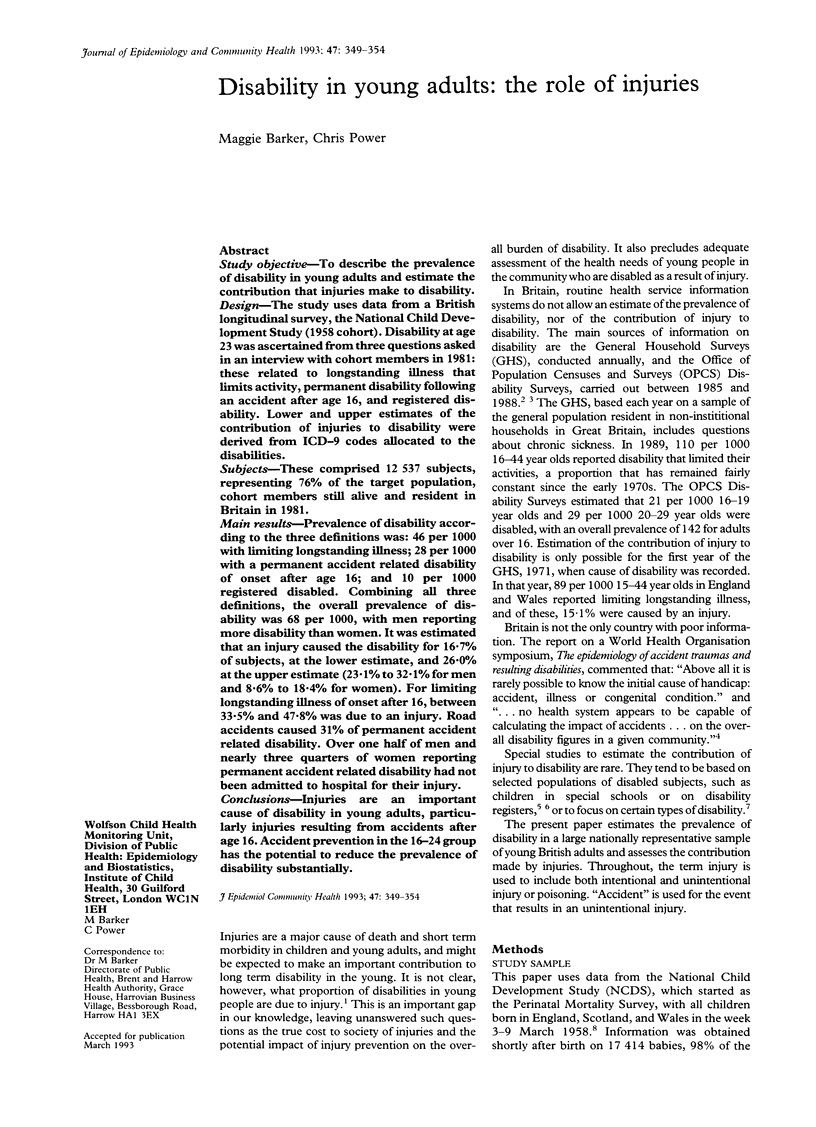
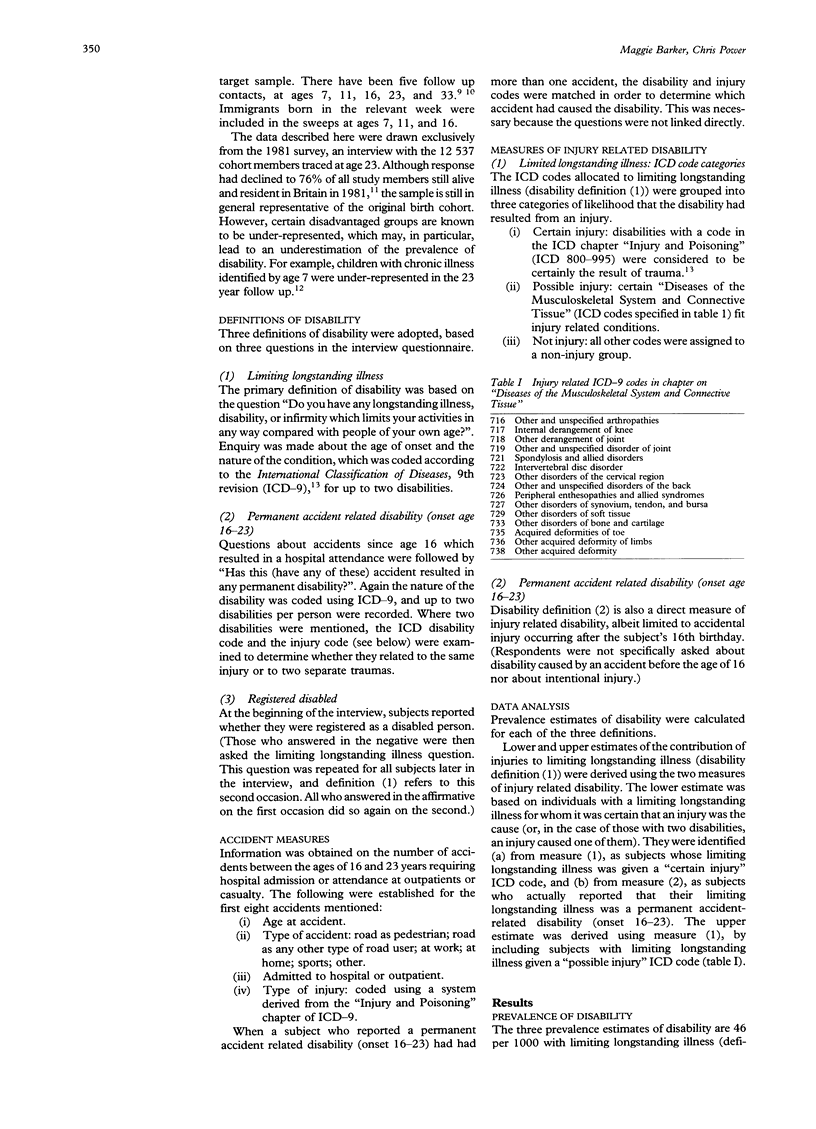
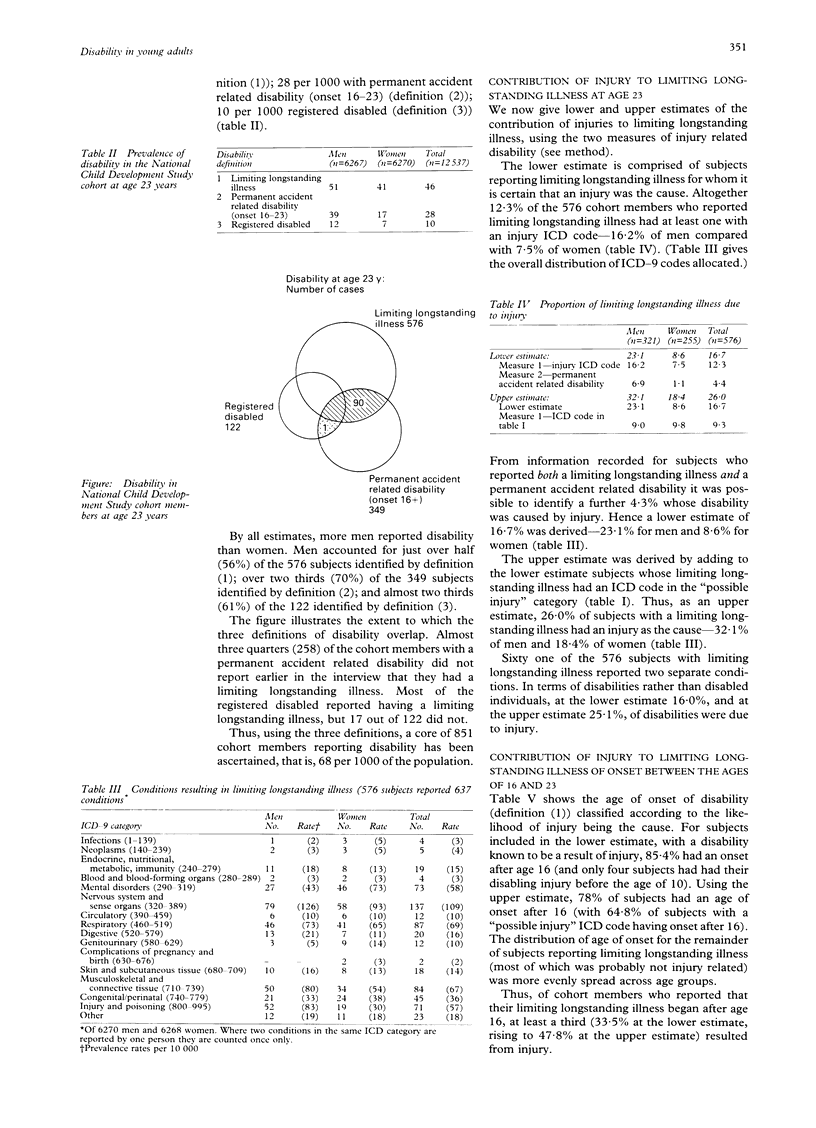

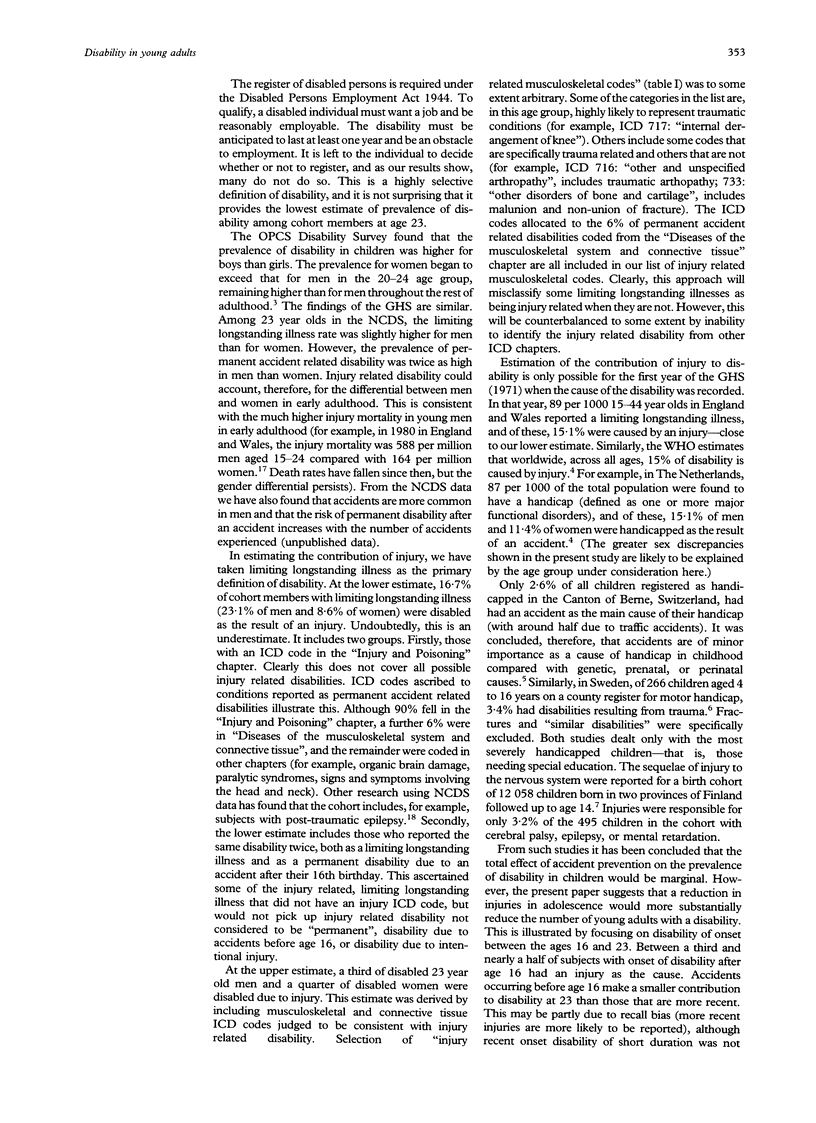
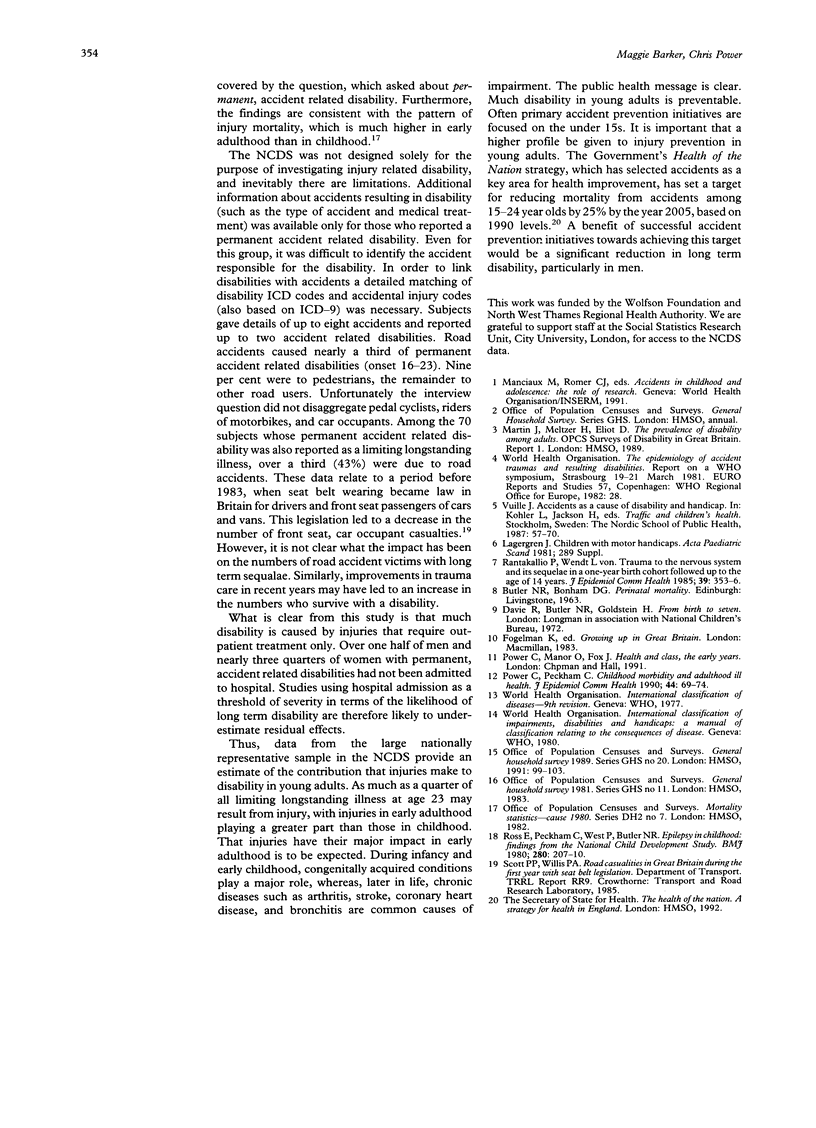
Selected References
These references are in PubMed. This may not be the complete list of references from this article.
- Power C., Peckham C. Childhood morbidity and adulthood ill health. J Epidemiol Community Health. 1990 Mar;44(1):69–74. doi: 10.1136/jech.44.1.69. [DOI] [PMC free article] [PubMed] [Google Scholar]
- Rantakallio P., von Wendt L. Trauma to the nervous system and its sequelae in a one-year birth cohort followed up to the age of 14 years. J Epidemiol Community Health. 1985 Dec;39(4):353–356. doi: 10.1136/jech.39.4.353. [DOI] [PMC free article] [PubMed] [Google Scholar]
- Ross E. M., Peckham C. S., West P. B., Butler N. R. Epilepsy in childhood: findings from the National Child Development Study. Br Med J. 1980 Jan 26;280(6209):207–210. doi: 10.1136/bmj.280.6209.207. [DOI] [PMC free article] [PubMed] [Google Scholar]


